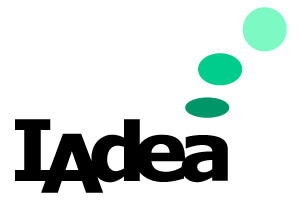
Quick Answer:
Why Should OEMs Pay Attention to Microsoft MDEP?
Microsoft Device Ecosystem Platform (MDEP) is Microsoft’s enterprise-optimized version of Android, designed specifically for business collaboration hardware. Built on AOSP (Android Open Source Project), MDEP isn’t just another Android variant—it’s Microsoft-managed Android for business.
What does that mean?
Unlike standard Android, which leaves OS maintenance, security patching, and cloud service integration up to the device maker, MDEP shifts those responsibilities to Microsoft. The platform provides:
- Centralized, Microsoft-delivered firmware and security updates
- Built-in compatibility with Microsoft Intune, Teams, and Azure Active Directory
- A standardized development environment optimized for enterprise needs
This means OEMs don’t have to reinvent the wheel when it comes to security, device management, or Microsoft service integration. MDEP enables faster product development, lower R&D overhead, and easier certification for Teams Rooms and other enterprise deployments.
If you’re building business-critical devices, Microsoft MDEP is the shortcut to meeting enterprise buyer expectations—without the usual complexity of standard Android.
Learn more in our cornerstone piece: What is MDEP – The Microsoft Ecosystem for Android Devices
OEM Pain Points with Standard Android
Standard AOSP (Android Open Source Project) gives OEMs complete flexibility—but with that freedom comes complexity, inconsistency, and risk. For enterprise-focused product teams, developing on stock Android can become a time-consuming, resource-heavy process that affects profitability and competitiveness.
Here are the common roadblocks OEMs face:
1. Firmware Fragmentation and Delays
Without a unified update strategy, Android firmware often diverges across models and regions. OEMs must maintain and test their own firmware stacks—leading to long delays, duplicated engineering work, and slower response times to emerging security threats.
Impact: Slower go-to-market cycles and higher maintenance costs.
2. Security and Compliance Burden
With AOSP, enterprise-grade security is not built-in—it must be developed and maintained by the OEM. This includes features like secure boot, hardware attestation, and encryption, which are essential for zero-trust environments but difficult to implement consistently.
Impact: Increased R&D load and risk of non-compliance in regulated markets.
3. Complex Integration with Microsoft Ecosystem
Integrating Microsoft services like Intune, Teams, and Azure AD into AOSP devices is a manual and time-consuming process. It often requires extra middleware, custom development, and complex testing cycles.
Impact: Missed deadlines and lower interoperability with customer IT systems.
4. Lengthy Certification for Enterprise Environments
Getting AOSP-based devices certified for Microsoft Teams Rooms or other enterprise use cases often means building a compliant stack from scratch. Every round of changes or updates can delay certification, especially without a standardized baseline.
Impact: Slower customer acquisition and missed enterprise deployment windows.
Microsoft MDEP directly addresses these pain points—streamlining firmware, simplifying integration, and accelerating your product roadmap.
How Microsoft MDEP Simplifies Product Development
Building enterprise-ready devices on stock Android can mean reinventing the wheel. Microsoft Device Ecosystem Platform (MDEP) changes that.
Instead of starting from a blank AOSP base, OEMs using MDEP benefit from a platform already aligned with Microsoft’s enterprise ecosystem—saving time, reducing engineering effort, and increasing reliability at scale.
1. Pre-Integrated Microsoft APIs
MDEP comes ready with embedded support for Microsoft services like Intune, Microsoft Teams, and Azure Active Directory. That means secure login, device compliance, and endpoint management work out of the box, without custom coding or third-party plugins.
Result: Less time troubleshooting integration, more time focusing on product experience.
2. Standardized Software Stack
With MDEP, Microsoft defines key system layers—security modules, firmware architecture, update mechanisms—so OEMs don’t have to. This eliminates the need to build and maintain separate security frameworks or device policies.
Result: Reduced R&D cycles and fewer bugs from custom patches or inconsistencies.
3. Simplified Certification for Enterprise Environments
Because MDEP already aligns with Microsoft’s own standards, it’s easier to certify devices for Microsoft Teams and enterprise use. The pre-certified stack reduces the number of iterations needed during testing, speeding up approval timelines.
Result: Faster route to Teams certification and enterprise market readiness.
Real Business Impact: Save Time and Cut Development Costs
Microsoft MDEP isn’t just about technical upgrades—it creates real business value for OEM product teams looking to compete in the enterprise device market. Here’s how:
Reduce Engineering Complexity
- No need to build the core firmware stack from scratch — MDEP provides a standardized, pre-integrated Android base with Microsoft security and management frameworks.
- OEMs can focus on product innovation and differentiation instead of foundational platform engineering.
Accelerate Product Development
- Unified development environment and Microsoft’s Fluent UI libraries speed up UI and app development.
- Streamlined Microsoft Teams certification shortens approval timelines, reducing project delays.
- Collaborations with ODMs like CVTE provide ready-to-deploy reference hardware, cutting lead times.
Lower Total Cost of Ownership (TCO)
- Microsoft-managed updates and security patches reduce long-term maintenance overhead.
- Less fragmentation = fewer resources spent on version control, bug tracking, and regression testing.
- Enterprises deploying MDEP-powered devices see reduced IT admin burden, resulting in lower support costs.
Predictable, Scalable Device Lifecycle Management
- MDEP includes baked-in support for Intune and Azure AD—zero-touch provisioning, centralized updates, and policy enforcement all come out of the box.
- OEMs and IT teams benefit from reusable components and a consistent stack, enabling scalable deployments.
Competitive Edge in Time-to-Market
- With monthly platform updates, up to four annual feature releases, and support for rapid iteration, OEMs can keep pace with fast-moving enterprise demands.
- Enables faster response to RFPs and increased agility in competitive bids.
Built-In Security and Compliance
- Hardware-based attestation, Secure Boot, and Microsoft Secure Pairing help OEMs meet enterprise security requirements without custom builds.
- Simplifies compliance for regulated markets (e.g., healthcare, finance, government), enabling quicker access to high-value verticals.
Leverage MDEP to Stand Out in the Enterprise Device Market
In a crowded B2B device landscape, winning the trust of enterprise IT buyers means offering more than just Android. Microsoft MDEP gives OEMs a powerful way to differentiate by delivering devices that are enterprise-ready, secure, and seamlessly compatible with modern IT environments.
Offer Microsoft Teams-Certified Devices with Built-In Advantage
MDEP is engineered to support Microsoft Teams Panels, Desk Phones, and Room Systems—helping OEMs ship devices that meet Microsoft’s certification standards faster and with less overhead. This gives buyers confidence that the device “just works” with their existing collaboration stack.
Built-In Enterprise Security That IT Teams Trust
Security is no longer a feature—it’s a requirement. MDEP’s native support for secure boot, hardware attestation, and encrypted provisioning gives enterprise IT departments assurance that your device aligns with zero-trust architecture and compliance mandates from day one.
Seamless Fit into Microsoft-Centric IT Environments
With MDEP, your devices are ready to plug into existing enterprise tools like Microsoft Intune, Azure AD, and SharePoint—no extra integration work needed. This lowers deployment friction and makes your products more attractive in Microsoft-heavy IT environments.
Position for Regulated and High-Security Sectors
Whether targeting healthcare, government, or finance, MDEP helps OEMs offer devices that are easier to deploy in regulated industries. Built-in compliance and remote manageability features appeal to verticals that require more than “just Android.”
Accelerate IT Procurement Decisions
Procurement teams favor standardization and long-term support. MDEP signals both—backed by Microsoft’s update schedule and long-term commitment. That means fewer objections and faster buying decisions from large enterprises.
Partnering with Microsoft: Strategic Advantage
Joining the Microsoft Device Ecosystem Platform (MDEP) is more than adopting a software stack—it’s a strategic move that positions OEMs to scale faster, launch smarter, and build with confidence in Microsoft’s enterprise ecosystem.
Accelerated Development Through Microsoft Tooling
As part of the MDEP ecosystem, OEMs gain access to Microsoft’s internal testing tools, documentation, and compliance resources—streamlining device development and certification for Microsoft Teams and other enterprise environments.
Enterprise-Ready Certification as a Trust Signal
MDEP-certified devices carry the weight of Microsoft’s enterprise standards. For OEMs, this certification signals security, stability, and long-term support—key decision factors for IT buyers managing large-scale deployments.
Joint Marketing & Sales Enablement
Certified partners may be eligible for Microsoft-led co-marketing, promotional visibility, and opportunities to be listed in Microsoft’s ecosystem directories. This opens the door to greater reach, brand credibility, and alignment with the Microsoft procurement path.
Final Verdict: With MDEP, You’re Not Just Building Devices — You’re Building Trust
In enterprise hardware, trust moves the deal.
Procurement teams don’t just buy features — they buy confidence. Confidence that the device will be secure. That it will integrate seamlessly. That it will be supported for the long haul.
By building on Microsoft MDEP, you give enterprise buyers something they deeply value: a device that carries the trust of Microsoft.
It’s no longer just “an Android device.”
It’s a Microsoft-compatible, security-certified, and IT-ready endpoint — the kind enterprise IT teams are more likely to approve, deploy, and standardize.
What does this mean for OEMs?
- Stronger positioning in enterprise RFPs
- Higher buyer confidence at the evaluation stage
- Lower resistance in regulated or security-conscious industries
- A reputation for delivering Microsoft-aligned innovation
- A long-term brand halo from association with the Microsoft ecosystem
In a crowded market, where every technical spec starts to sound the same, trust is the differentiator. And MDEP gives you a platform built not only for performance — but for credibility.
That’s why more OEMs are choosing Microsoft MDEP — before their competitors do.
Ready to Build the Next MDEP Device?
If you’re planning your next Teams-certified device or rethinking your Android roadmap for enterprise customers, now is the time to explore Microsoft MDEP.
Talk to an MDEP-certified partner like IAdea — we help OEMs go from concept to deployment with hardware, software, and enterprise integration expertise.
Need help with positioning, hardware integration, or Teams certification? Let’s build it right—together.

